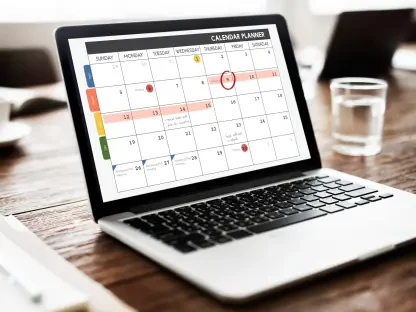Influencer programs win impressions, but they rarely move procurement, shorten deals, or raise lifetime value. In B2B, trending content is fine—until your CRO asks for pipeline impact. Most programs stop at impressions, with only a small fraction ever tied to qualified opportunities or revenue.
Influencer marketing in B2B too often looks like the consumer model: chase reach, expect miracles, then shrug when legal, procurement, and sales want measurable outcomes. The skincare case in question flipped that script. Instead of brand-first stunts, the campaign removed logos, seeded expert-led reviews, and converted credibility into gated assets and sales enablement. The result wasn’t just more likes—it was higher-intent leads and demonstrable lift in conversion. A similar approach is showing traction in B2B: one SaaS vendor recently sent unbranded product trials to a curated circle of industry analysts and IT architects, asking for candid reviews before the official launch. Those unbranded assessments were later repurposed into gated white papers and webinar content that directly influenced enterprise buyers.
This article translates those lessons into a step-by-step playbook that B2B marketers can deploy this quarter to make influence a repeatable revenue lever.
Why Unbranded First Works for Marketing That Needs To Scale Revenue
Before diving into execution, it’s worth asking: why does stripping the brand label make such a difference in B2B? The short answer is that credibility has more weight than reach when procurement, compliance, and finance are at the table.
Remove the brand label, and you force the narrative into evidence. That’s a subtle but profound shift: audiences evaluate product claims on merit before persuasion. For B2B buyers—skeptical, risk-averse, and procurement-led — that order matters.
Core benefits:
Credibility converts faster than reach: expert voices reduce procurement friction.
Educational content outperforms spectacle: buyers want how it works, not what it looks like.
Cross-channel lift becomes measurable: expert-led assets fuel owned, paid, and sales channels.
The skincare campaign proved this. Unbranded samples sent to credentialed creators (dermatologists, estheticians) produced raw, expert-first content that earned five times the engagement of prior brand-forward posts. More importantly for B2B, that content easily transformed into gated technical reviews and webinar material that mapped cleanly to the funnel.
That credibility shift is powerful, but it raises the question: how do you actually operationalize unbranded trust into a repeatable campaign model? That’s where anatomy matters.
The Anatomy of a B2B-Friendly Unbranded Influencer Campaign
Knowing that unbranded-first works is one thing—building it into a campaign blueprint is another. This is where structure, partner selection, and asset orchestration separate casual experiments from scalable programs.
Curate experts; don’t chase celebrities. Target domain authorities—product managers, CISOs, and supply-chain analysts—who can produce long-form reviews, webinars, and technical teardowns. Match each expert to a buyer persona.
Ship unbranded proof, send samples without logos, and invite honest assessment. Ask for three deliverables: a short demo, a long-form review, and a technical teardown for gated distribution.
Convert reviews into demand assets. Stitch expert content into a gated “expert review” asset, a webinar series, a sales one-pager, and micro-snippets for paid social.
Orchestrate cross-channel amplification. Pair influencer assets with targeted LinkedIn, account-based outreach, trade OOH near conferences, and retargeted demo offers.
Enable sales with proof. Arm sales reps with quotes, clips, and the gated asset — make influencer content usable in demos and RFP responses.
With the structure in place, the next hurdle is proof. You can’t scale without evidence that it works, which means measurement has to step into the spotlight.
Measurement That Proves the Business Case
Great campaigns still fall flat in boardrooms if they can’t prove value. That’s why tying influencer impact directly to pipeline, deal velocity, and long-term value is non-negotiable in B2B. Move past impressions and clicks. Connect influencer exposure to pipeline and deal outcomes.
Track:
Engagement depth: average watch time, scroll depth, time on asset;
Lead quality: MQL→SQL conversion rate, conversion velocity, average deal size for leads from influencer assets vs baseline;
Content ROI: cost per qualified demo booked, CAC by channel;
Long-term value: retention/upsell rates for customers who engaged with expert content in their buyer journey.
Implement UTM tagging, gated downloads, and unique landing pages for each creator. Insist on creator-provided first-party analytics where possible (watch time, CTA clicks). If you want budgets to scale, show pipeline and LTV improvements—not just impressions.
Once you’re tracking the right signals, you’re ready to act on them. That means building a quarter-by-quarter blueprint that translates intent into execution.
Practical Blueprint: What to do This Quarter (Step-By-Step)
Data shows the model works. Now the challenge is execution at speed. Here’s how to translate theory into immediate action with a practical step-by-step plan.
STEP 1. Map three buyer personas and match ten credible creators (two domain experts, eight micro-influencers with relevant audiences).
STEP 2. Run an unbranded sample drop with five creators; require each to deliver one long-form asset (webinar, case study, or technical review).
STEP 3. Create a gated “expert review” hub and gate the long-form technical teardown as a lead magnet.
STEP 4. Launch an ABM amplification plan: LinkedIn sponsored posts + retargeted demo ads aimed at accounts that consumed the gated asset.
STEP 5. Brief sales and include an “influencer asset pack” with two pull quotes, a 60-second clip, and a one-pager.
STEP 6. Instrument tracking: unique UTMs, CRM source flags, and a dashboard to compare MQL→SQL and deal size by source.
STEP 7. Run an outcome pilot: measure time-to-close and average deal size for 90 days post-campaign.
Executing the basics gets your program moving, but long-term success depends on asset mix. The next step is knowing which content formats actually return ROI in B2B.
Content Formats That Drive B2B ROI
Not all influencer outputs are created equal. B2B audiences reward depth, proof, and integration into their buying process. The following formats consistently drive conversion and pipeline.
Technical teardowns: deep dives that feed product and sales teams.
Webinar co-hosts: creators co-presenting with product experts to validate claims live (use Q&A to capture intent).
Case study hybrids: influencer testimonial + customer proof and metrics.
Snippet packs: short clips and pull-quotes tailored for sales sequences and ABM ads.
Long-form gated review: the conversion magnet your SDRs will actually rely on.
Of course, picking formats is only half the game. To make them land, you need the right guardrails in place—security, compliance, and sales alignment.
Operational Must-Dos (Security, Legal, And Sales Alignment)
In regulated or complex industries, credibility can backfire without operational guardrails. Legal, compliance, and sales must be integrated from day one to keep content sharp and usable.
Expert content can run afoul of compliance. Loop in legal early and define claim guardrails. For regulated categories, co-create scripts that allow experts to speak candidly while staying compliant. Train sales on new assets and how to reference them in demos and RFPs. Finally, bake attribution into the contract with creators: UTMs, permission to repurpose content, and basic analytics sharing.
Even with guardrails, campaigns slip when common mistakes creep in. To keep momentum, you need to recognize and avoid the pitfalls that sink ROI.
Common Pitfalls—And How To Avoid Them
Every influencer strategy has weak spots—vanity metrics, neglected repurposing, or poor sales enablement. Spotting them early can mean the difference between wasted spend and repeatable wins.
Treating creators like vendors. Instead: collaborate. Invite creators into product briefings and co-creation.
Measuring the wrong things. Stop funding vanity metrics. Tie every campaign to pipeline KPIs.
Ignoring repurposing. Influencer content is fuel — repurpose or lose it.
Skipping sales enablement. If sales can’t use the content, procurement won’t feel the impact.
Avoiding pitfalls clears the runway. From here, the focus shifts to payoff: what happens when credibility powers the buyer journey from the very start.
So, here’s a short checklist to start today
Pick one vertical and one buyer persona.
Shortlist ten creators and brief the top five for an unbranded drop.
Design one gated technical asset and a webinar outline.
Set up unique UTMs and a CRM source for tracking.
Schedule a two-week sales enablement session to roll out the asset pack.
The Payoff—Influence That Actually Scales
The reward for all this discipline is simple but powerful: influence that doesn’t just win attention, but accelerates deals, strengthens retention, and proves marketing’s commercial impact.
When credibility sits at the start of the buyer journey, every touch becomes more efficient. Prospects arrive better informed and closer to purchase. Sales cycles shorten, deal sizes grow, and procurement treats influencer programs as a legitimate demand channel — not an expense line to cut. That’s how influence becomes a multiplier for pipeline and lifetime value, not a one-off stunt.
Which brings this conversation to the single most important move: picking one persona, one expert, and proving it in practice. Do that, and influence stops being noise—it becomes revenue.
….. one move to make now
Pick one buyer persona and one domain expert. Run a branded-off test: ship unbranded proof, collect two long-form assets, gate one as a lead magnet, and measure MQL→SQL conversion for 90 days. If the numbers show higher intent and larger deals, scale the partner roster and standardize the playbook. If not, iterate on partner selection or asset formats.
Influence isn’t louder messaging. It’s better evidence delivered by the right voices. Do that consistently, and influencer marketing stops being a gamble and starts being a repeatable revenue engine.









